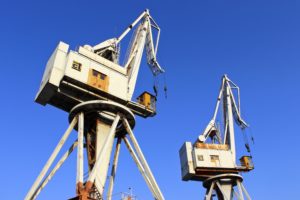 With monetary policy now so ineffective (bank rates are as low as they have ever been, in some countries negative, and yet they are not stimulating investment and spending) countries are increasingly looking to fiscal policy – that is direct spending by Governments. The expenditure of choice is infrastructure, and government infrastructure proposals are usually well received by the electorate because they are seen as creating jobs.
With monetary policy now so ineffective (bank rates are as low as they have ever been, in some countries negative, and yet they are not stimulating investment and spending) countries are increasingly looking to fiscal policy – that is direct spending by Governments. The expenditure of choice is infrastructure, and government infrastructure proposals are usually well received by the electorate because they are seen as creating jobs.
But proposals are normally vague on exactly what type of infrastructure spending is in mind, and the employment benefits of spending are often hyped up, so here are a few facts to bear in mind.
FACT: Out of every dollar spent in Australia, some proportion will go overseas in the form of imports. Some years ago, a government industrial economics report estimated that:
Maintenance generates 25% more employment than house construction and from 50% to 100% more employment than engineering construction. This is because:
- Maintenance is highly labour intensive, therefore there is little leakage of funds overseas to pay for imported elements
- House construction spending has a higher proportion of imports
- Engineering construction (i.e. infrastructure), with its specialised equipment and materials has an even higher proportion of imports.
FACT: It is not infrastructure spending specifically that creates jobs but ANY government spending. Some types of spending, as indicated above, will create more jobs than others (and engineering construction such as infrastructure is on the low end of job creation).
FACT: Just as putting money into the economy will stimulate job growth, it is also true that taking money out of the economy, e.g. by taxing us to pay for the infrastructure, or reducing other government spending for the same purpose, will reduce job growth.
FACT: Low income earners spend more of any dollars they earn than high income earners. So if we find the money for infrastructure by increasing taxes or reducing other spending on low income earners (which is what is happening at the moment) and we then spend that money on high income earners in infrastructure industries, this will itself reduce jobs rather than creating them.
So is infrastructure spending the jobs panacea so many believe it to be?

Well said. Creating a culture that honours maintenance and the skills held by people who live near us generates more than jobs. It creates self respect and youth employment as well as respect for the older skilled workers.
Funding infrastructure creation is accepted as “what politicians do”. Making jobs through the process of creating infrastructure is accepted as “what politicians take credit for”. Like “kissing babies” this is a pattern of behavior tacitly agreed by both elected officials and the public they serve. Moving the conversation from “Opening and Unveiling” to service requirements and delivery will help both groups.
consulto.com.au
Gregory. I could not agree more! The next question, therefore, is ‘how do we do it?’ For a client in the Pacific, I am currently working to establish clear links between the many services that infrastructure provides and the assets themselves. Any clues, anyone, on how we can do this for developed countries like Australia that now have, as Gregory, says, rather entrenched views?